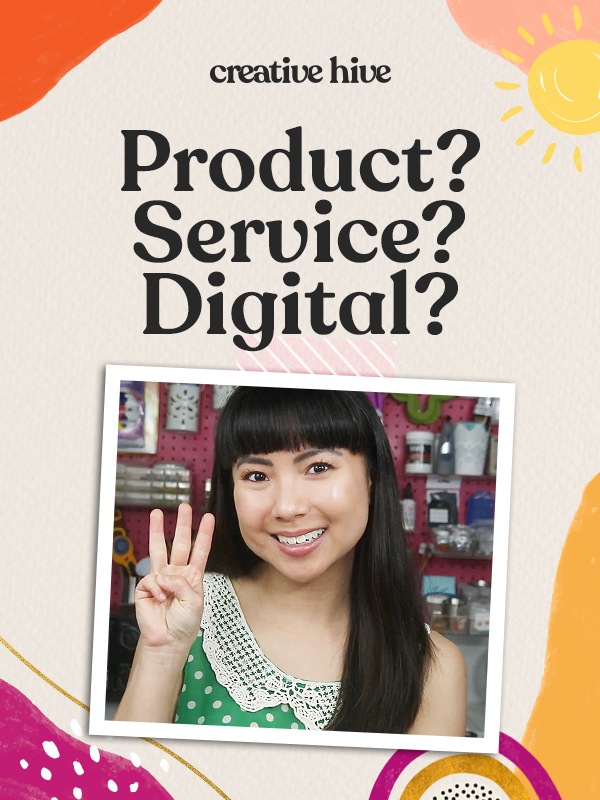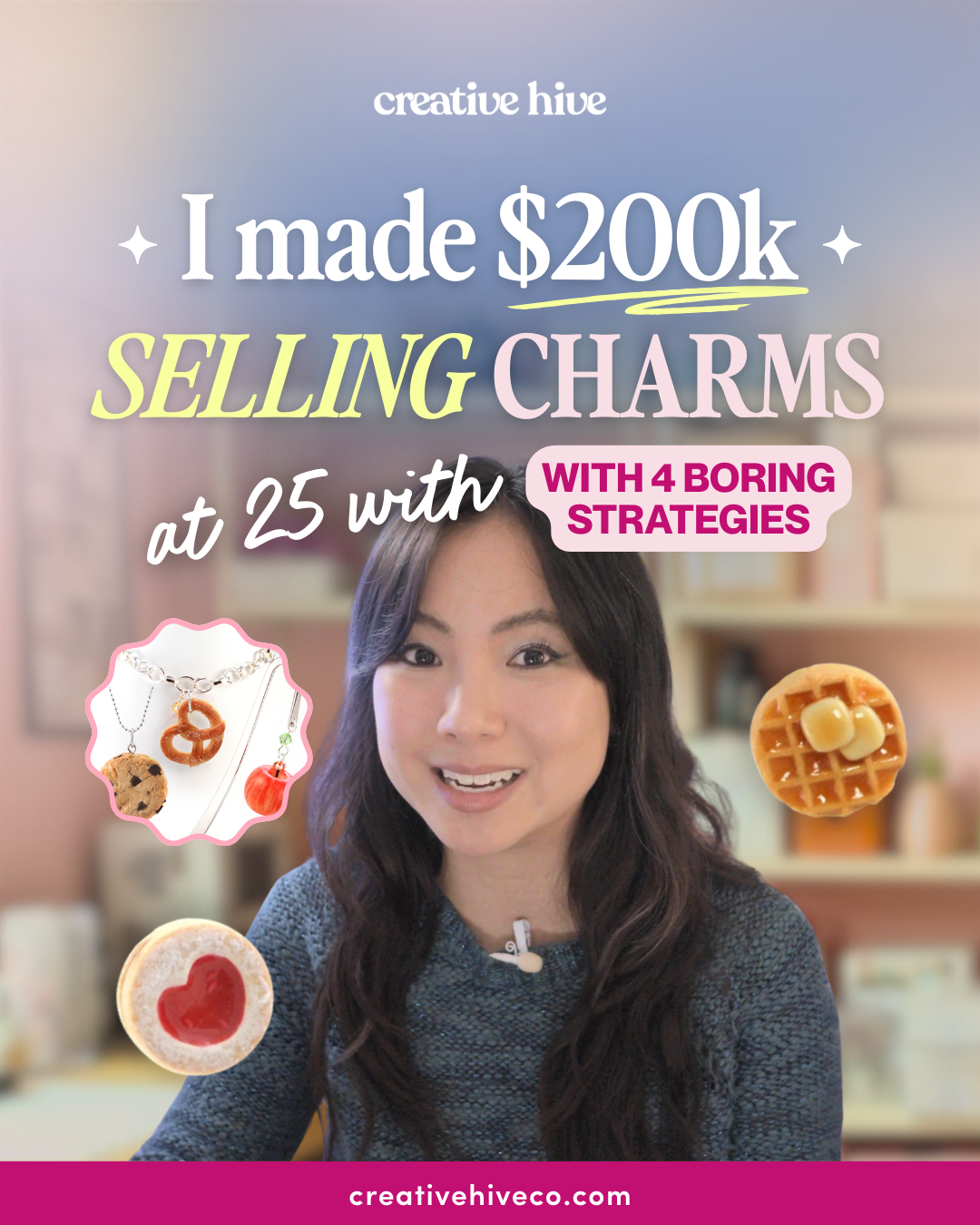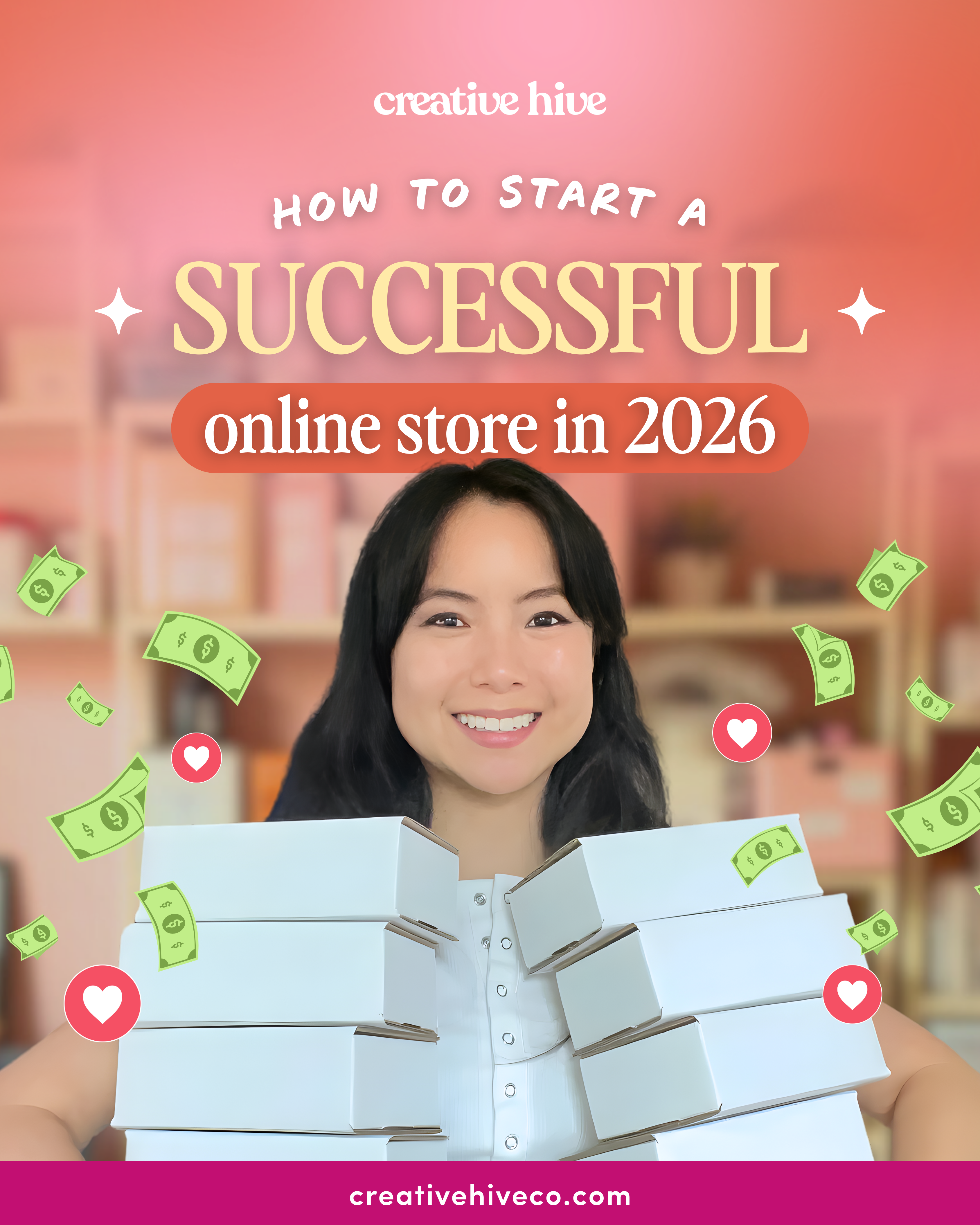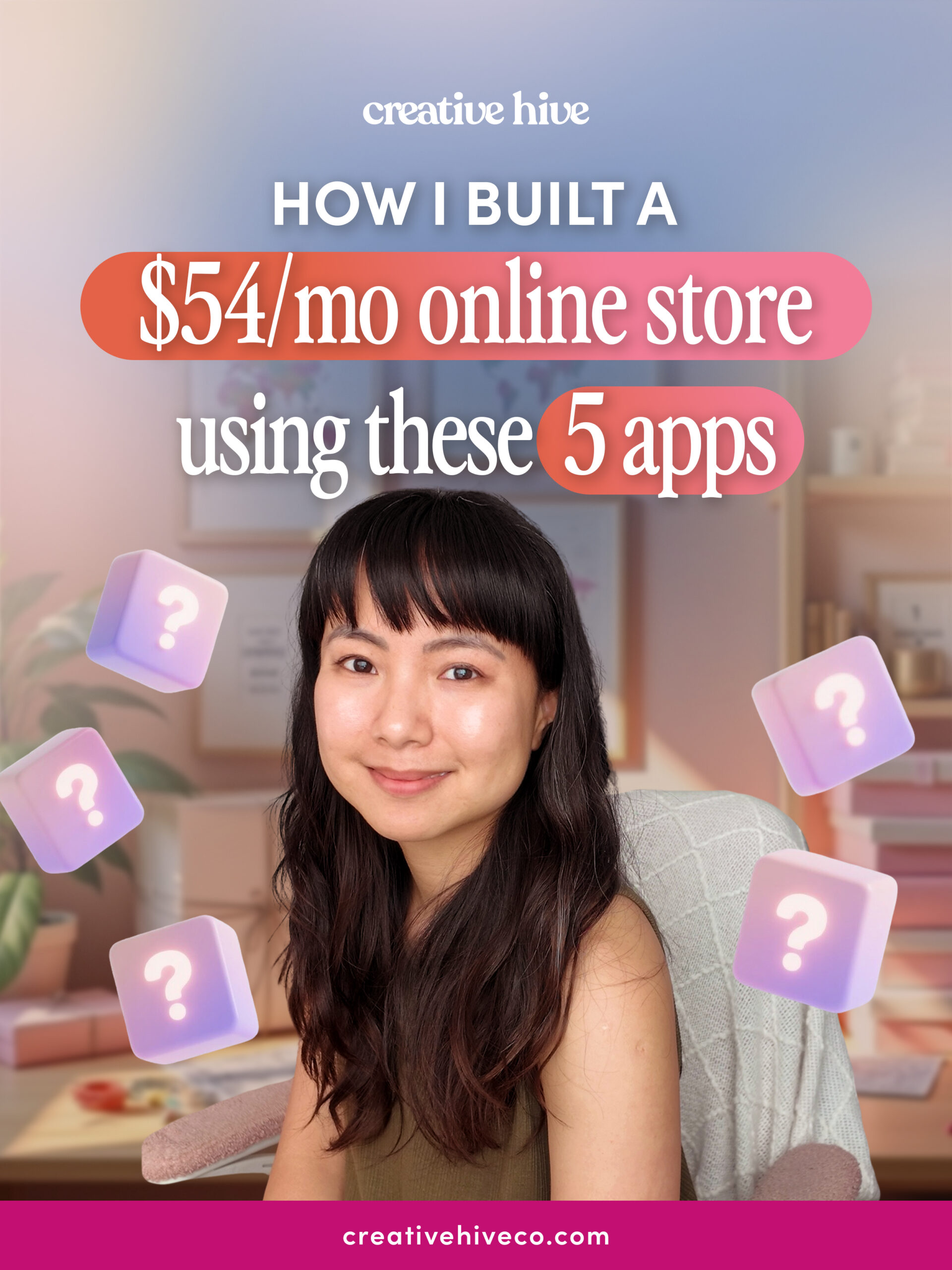I want to help you build a sustainable, profitable handmade business that makes you consistent income and sales. I only ever teach or recommend marketing, social media, pricing, production and branding tips that I’ve personally used successfully in my own 7-figure handmade businesses.
I'm Mei, from Los Angeles!
Read More
Popular Posts You'll Love
Looking for something?
Categories
starting a business
get more traffic
running a business
make more sales
branding
growing a business
mindset & productivity
podcasts
pricing & money
product photography
reviews
selling on etsy
selling on amazon
social media
selling wholesale
- Facebook0
- Twitter19
- Pinterest0
- 19shares
If you’re thinking about starting your own business, but you’re not quite sure what kind to start, keep reading.
In today’s blog, I want to help you identify which type of business you should start.
We’ll go over the three main types of online businesses so that by the end of this blog, you’ll have a better idea of which business type is the best for you to get into.
So knowing which type of business you have makes everything a lot simpler for you because each type should be approached differently.
The way you get customers for each is different, the type of work you’d be doing is different, so it’s important to know the difference before you jump in.
It’s just like going to those career fairs in school and you’re trying to learn more about what a certain occupation is like, but no one really tells you, this is what I’m hoping to do in this blog.
Product-Based Business
The first business type is a product-based business.
This is a type of business where you sell actual physical products.
It involves manufacturing products, whether you do so in your home, in a factory, or through a third party.
These are products like clothing, electronics, furniture, and literally anything you can physically touch.
There are lots of pros to a product-based business, like the feeling of accomplishment and fulfillment at making your own products and seeing people actually using them.
If you don’t handcraft your own products, print on demand is another option.
It’s super easy to get started and makes the manufacturing part of the process even quicker and simpler too.
Even if you don’t design your own print on demand products, you can buy inventory from other artists and manufacturers to resell.
Nowadays, there are several ways to make tangible products, and overall this business model is the simplest one we’re talking about today.
For a product-based business, besides doing sales and marketing like all businesses have to be doing, you’ll be spending most of your time making new products, packing and shipping orders.
But with the pros come the cons.
One con is that because of the very fact that you’re dealing with physical goods, the quality can vary, unlike with digital products that are always the same.
So being 100% on top of the quality of each order is always a challenge, and if something goes wrong, it could lead to a bad review.
Another con is that in some way, you’ll have to worry about shipping.
You will either have to personally ship the product, or the print on demand company will have to, but in both scenarios shipping is involved, and that’s a part of the process that’s out of your hand. Just know that a lot could happen like lost packages, late packages, damaged packages.
It’s just an extra thing to concern yourself with when it comes to the customer service side of things.
Digital Product-Based Business
The second type of business is a digital product-based business.
Essentially it’s like a product-based business, except it’s all digital.
You never see or touch a physical product ever with a digital product-based business.
These are products like online courses, kindle books, audio books, software programs, digital art, and more.
A huge advantage to this is you just design the product once and you can sell it over and over again.
It makes the entire selling process fast and easy—you don’t have to manufacture or ship your products.
Customers get delivery of their orders instantly.
And when you’re ready to launch new products, it’s relatively cheap to make.
Digital product-based businesses spend most of their time on the computer, either with designing new products, improving or updating existing ones and doing customer service.
There are some cons, though. There’s a lot of competition out there, and with so many people selling online nowadays, standing out can be very hard especially when you’re first starting out.
Especially because making digital products is such a low barrier to entry compared to making and selling a physical product.
Anything that’s easy to do, there’s bound to be more competition.
It can also be easier for people to scam you or rip you off and that can be hard to police.
Typically, it’s also difficult to charge a lot for digital products like Canva templates, digital planners, knitting patterns or crafty courses, which means that you’ll need to have a lot of orders rolling in constantly to actually make a living at it, which isn’t always realistic.
So volume is something you’ll need, or diversity, if you get into a business like this.
The exception here would be if your product promises to solve a real problem someone faces in their life, like saving a marriage, finding a romantic partner, starting a business, losing weight, or improving their financial situation.
These are the types of problems people will pay more money for.
And to take it a step further, there’s a huge myth that these types of products are passive income because you might think, you’re just making the product once, right?
And it keeps selling and selling over and over again without any extra work?
Well, they really aren’t passive, because selling requires constant effort, and with any digital product, be prepared for continuous customer service because people will always have questions about how to use your product.
Service-Based Business
The third business type is a service-based business.
The customer or client pays for a service to be performed.
Some examples of service-based businesses in the creative online space are photographers, copywriters, virtual assistants and graphic designers.
The pros include being able to charge higher prices depending on the degree of the desired outcome.
So the more valuable the outcome to the client, the more you can charge.
For example, if you’re a copywriter that specializes in writing sales copy, your work is directly tied to your client’s sales, and as such, it’s easier to charge more.
A service-based business is great for outgoing people who love working with others because obviously, you’ll be working so much more closely with your client compared to any of the other two business types.
Another pro is that it’s actually really easy to get started from zero.
You don’t have to create a product before being able to sell.
In order to build credibility, people just starting out in a service-based business oftentimes offer their services for a reduced rate at the very beginning.
This helps them build up good customer reviews and grows their portfolio, allowing them to increase their prices later.
So many creatives start out by offering a service, then move on to selling products when they become more established and have useful feedback on what customers want from them.
Service-based business owners spend most of their time building relationships, networking or doing content marketing, so it’s a lot of computer work as well.
All that sounds great, but keep in mind a few cons.
If you’re the only one fulfilling orders, it will likely become stressful and overwhelming, and can make it challenging to scale up.
Offering services is also competitive, especially when you’re first starting out from scratch, and can be unpredictable, making it difficult to rely on it for a consistent, stable income.
A lot of service based business owners I know, either eventually increase their rates significantly to deal with this and hire additional team members, or they end up productizing their expertise into a course which is easier to scale.
My Choice of Business
For me personally, I decided to go with a product-based business from the beginning because I’ve always loved creating things with my hands.
The feeling I get from creating something and seeing other people actually using and enjoying what I made is such an amazing feeling.
And over the years I’ve been able to grow my business through lots of love and hard work, and I wouldn’t trade it for anything else in the world.
So if there’s a piece of advice I could give you, it would be to choose your business type based around what you really love to create, because I’m proof that with time, the money will follow when you do something you love.
It’s generally, from what I’ve found, having run all three types of businesses myself, easier to sell physical products than anything else.
Physical products are so much more straightforward and it’s easier to control the overall experience for your customer.
I’ve also experimented with other types of businesses and products as well.
My husband and I share another product-based business, but that one is print on demand.
I do love my handmade business so much, but I will say that print on demand makes life a lot easier since I don’t have to store any inventory or take the time to make the products or ship them.
So from personal experience, I can tell you that if you don’t want to deal with inventory or aren’t passionate about making handmade items, print on demand would be a much better option for you!
We do also sell digital prints of our art but it’s interesting to see that most people actually prefer buying the physical products, like our framed prints or canvas wraps.
Given the option, I think people place greater value in something they can hold in their hands, compared to a PDF file sitting on their computer.
I’ve also created a service-based business called Creative Hive, where I coach other creatives on how to make a full-time living selling their handmade products online.
When I first started, I didn’t have a product yet, so I offered one on one coaching with clients.
And naturally, this eventually grew into a digital product, which is my course, the A Sale A Day Business System.
Total transparency—my service-based business has been the hardest one to grow.
It took a lot of content marketing, lots of time working for free putting out free podcasts, YouTube videos, blog posts, to show people that I knew what I was talking about and that they could trust me, before more people felt comfortable investing in my expertise, and you’ll likely have to do the same.
So while sales can be slow sometimes, it doesn’t bother me.
Because I started Creative Hive for the love of sharing knowledge and teaching people what I know to become successful in their own businesses.
That’s what’s most important to me.
It feels so good to make an impact, literally I had a student the other day say that I’m changing lives.
I mean, this student did quadruple her business, so! It’s so fulfilling.
So if you’re up for being in it for the long haul because you know your service can really help people, this could be the right path for you.
And there you have it! Those are the three types of businesses that you can start.
Which of the three do you want to start? And why? Let me know down in the comments below! I hope this blog has been useful in helping you choose the right type of business for you.
And don’t forget to subscribe to my YouTube channel for more great handmade business tips and tricks!

Leave a Comment
Liked this article? Share it!
Unlock a Profitable Handmade Business
in Just 12 Weeks Without Using Etsy
or Social Media
FREE WORKSHOP
This workshop is for anyone who makes and sells a handmade or physical product, including jewelry designers, artists, paper designers, bath & body product makers and more!
What You'll Discover
The #1 mistake people make with Etsy & social media that causes shops to FLOP
The secret to making it with your handmade shop so it's no longer just a hobby
How to make sales in your handmade shop with ease so you can finally get to 6-figures
TAKE ME THERE
Your email address will not be published. Required fields are marked *
Leave a Reply Cancel reply
About
Blog
A Sale A Day
Student Login
Free Class
Contact
Terms
Become A Student
Watch On YouTube
Student Reviews
See My Handmade Shop!




You have some interesting points in this article. I would never have reviewed any of this if I hadn’t come across this. Thanks!.
The world of business is constantly evolving, and the rise of cryptocurrency has opened up a ton of new opportunities for entrepreneurs and investors. It’s fascinating how digital currencies are reshaping traditional finance and creating pathways for earning that didn’t exist before. I recently came across an article on https://icoholder.com/blog/how-to-make-money-with-cryptocurrency/ that breaks down some practical strategies for leveraging crypto to build income streams. What stood out to me was how straightforward and beginner-friendly the advice is, especially in such a complex field. It’s definitely worth exploring if you’re curious about integrating crypto into your business ventures.
That pushed me to look for tools that could organize all of this in one place. The approach shown here https://corefy.com/merchant-management helped me understand how centralizing merchant data and workflows can streamline daily operations. Once I started using a system built around that idea, managing merchants felt far more structured and stress-free.